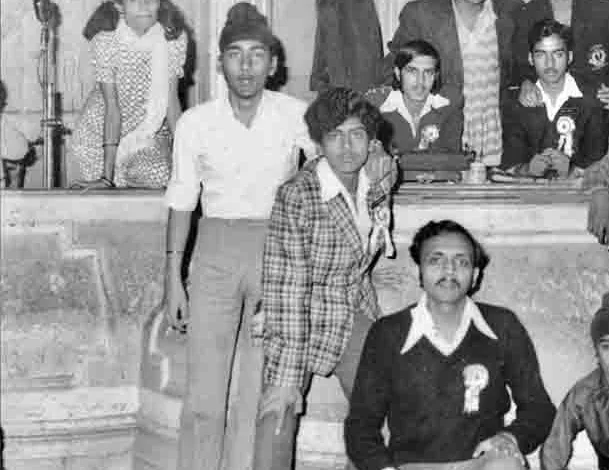Hillbilly : Mussoorie: two centuries and post-independence neglect

 LOKESH OHRI
LOKESH OHRI
The recent gutting of the Mussoorie Skating Rink has brought the curtains down on one more part of the legacy of a hill station that has always prided itself in being the Queen of the Hills. In the two centuries of its existence, the unfortunate fire incident at Mussoorie’s only remaining Victorian style theatre building with a solid wood floor that nurtured roller skaters for generations is symptomatic of how, despite the hill station’s popularity among tourists who brave day-long traffic jams to reach here on long weekends, the gross neglect of the hill station’s heritage has led to substantial degeneration of its character and fabric.
In another tragic loss almost five decades ago, the Standard Skating Rink, earlier known as the Stiffle’s Standard Restaurant, was consumed by a fire. Firefighting facilities were non-existent in those times in a hill town where most structures were extensively timbered. Several years later, a similar fate visited the Charleville Hotel in its avatar as the grand library of the Lal Bahadur Shastri National Academy of Administration or the IAS Academy. By the time the rusty fire engines were rushed from Dehradun, Mussoorie not only lost an iconic landmark but also a large body of knowledge stowed in the library in the form of rare manuscripts and books, including perhaps the book collection of the radical humanist MN Roy. Sadder still is that the site of the Standard Skating Rink was rebuilt as a government guest house now known as Garhwal Terrace, a gloomy, ignominious structure that completely blocks-off the enchanting views of the Doon Valley from the Mall Road. The IAS Academy did try to stick to the old site plan with a tin roof while adding modern amenities but fell well short of the desired architectural outcome. The lack of imagination and aesthetics in our post-independence public buildings is fabulously conspicuous by their sheer absence.
The recent fire at the Mussoorie Rink, at a time when the hill station should have been celebrating its two-hundredth birthday as a hill station showcasing its rich heritage, reminds us once again of the appalling standards of public safety in the town. More significantly, it points to the traffic chaos that has now engulfed the hill station. Eyewitnesses say that the fire tenders could not reach the site of the conflagration owing to haphazardly parked vehicles and the traffic jams. It is evident that in the mad rush to make money, uncountable numbers of cheaply hired two-wheeled scooters and motorcycles are being allowed into the hill town (the unofficial figure is 4,500 per day), with scant regard to the safety of the tourists and the pedestrians. This has not only led to traffic hazards but also causes unbearable noise pollution in the once quiet hill town owing to unregulated honking. To add to the woes of those looking for a peaceful walking experience along the Mall Road, the authorities have been unable to control the driving of large cars and SUVs on it.
The founders of the hill town, Fredrick Young and Fredrick Shore, while establishing their shooting box on Camel’s Back Road would never have imagined in 1823 that independent India would fail so miserably in safeguarding this heritage that even now gives pleasure and aesthetic satisfaction to so many. The hill station has remained Uttarakhand’s pre-eminent tourism destination, attracting millions every year, but has been allowed to go to rack and ruin.
Behind this apathy is the disputed ownership of most of these heritage buildings that have been allowed to remain in private hands without any regulations on protection, adaptive reuse and restoration. While the Savoy was miraculously saved from the brink, other sites like Castle Hill, Sylverton, The Himalayan Club, Picture Palace and so many others have not been so fortunate. While the Picture Palace looks completely dilapidated, the Mussoorie Library still survives on the strength of its regular members. The historic Sylverton Grounds where Mahatma Gandhi once held his prayer meetings, is now a car park. Castle Hill, under the Survey of India, has scant visitors with very few people allowed inside the campus. The George Everest Estate has, after years of neglect, recently found a new lease of life as a Cartographic Museum. As for Company Garden and Kempty Falls, the celebration of concrete completes the picture.
Mussoorie desperately needs a heritage policy that can protect its built and natural heritage. All of us who value this heritage must come together to do an extensive listing of heritage sites and prepare guidelines for their protection and adaptive reuse. An inventory of trees and forest patches is also in order. But most importantly, it is the community of Mussoorie that must take ownership of these sites and ask the right questions against any form of vandalism. It is only through a people’s movement that history can survive. Let us strive to make heritage a movement, because a tourism economy cannot survive unless heritage is conserved.
Mussoorie’s Cantonment, Landour, is a prime example of this trend. Today, Landour attracts so many visitors because the authorities limited the number of built structures to around the figure of seventy, the same as it was at the dawn of independence. With owners pitching in to retain and restore the historic context of the private bungalows and public spaces in institutions such as the Woodstock School, Jabarkhet Nature Reserve, Rokeby Manor, La Villa Bethany and the Landour Bakehouse, the allure of this space, combined with its Deodar, Himalayan Oak and Rhododendron forests, is irresistible.
Mussoorie, in order to sustain its tourism economy needs to borrow a leaf from the Landour playbook and place a premium on its heritage. The sooner we do it, the more we shall be able to save. And for heaven’s sake, limit those two-wheelers while ensuring their horns go silent forever!
(The writer is an anthropologist, author and activist who is the founder of public walking group Been There Doon That. Views expressed are personal)






